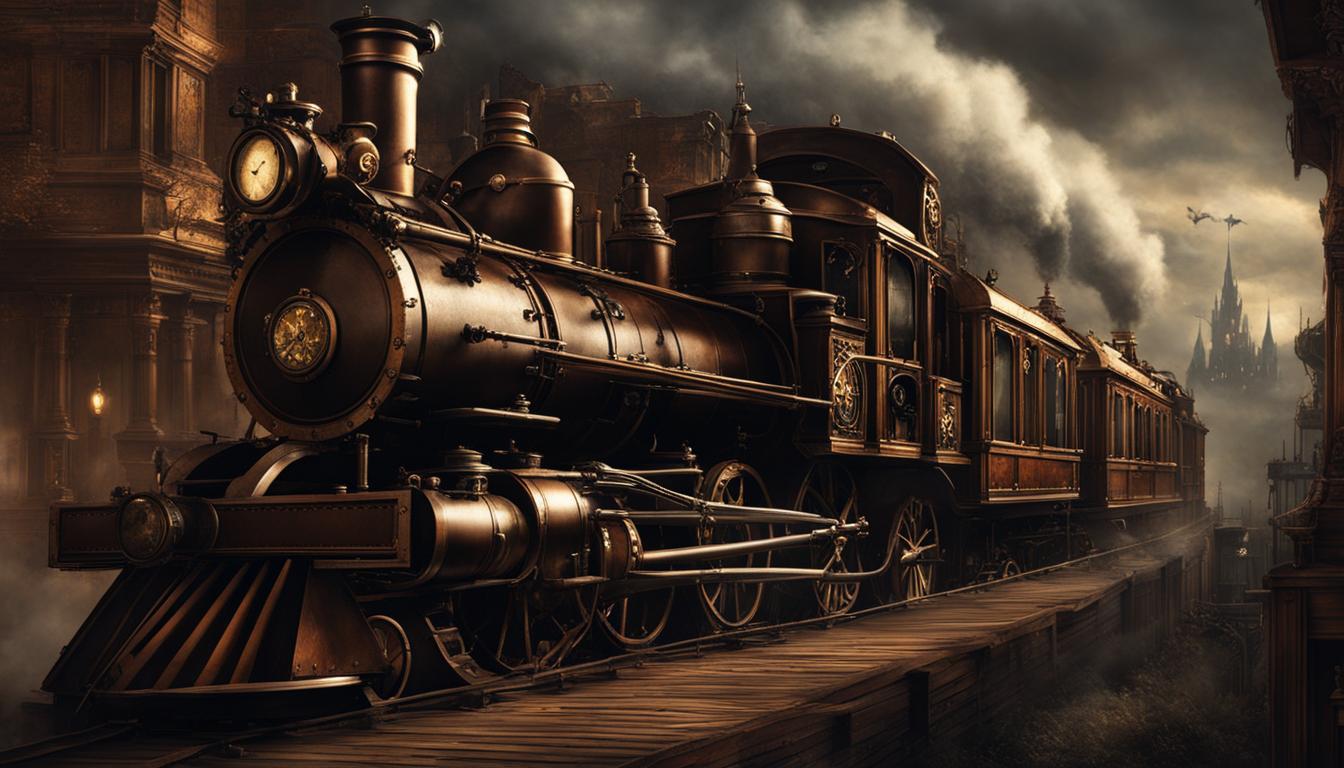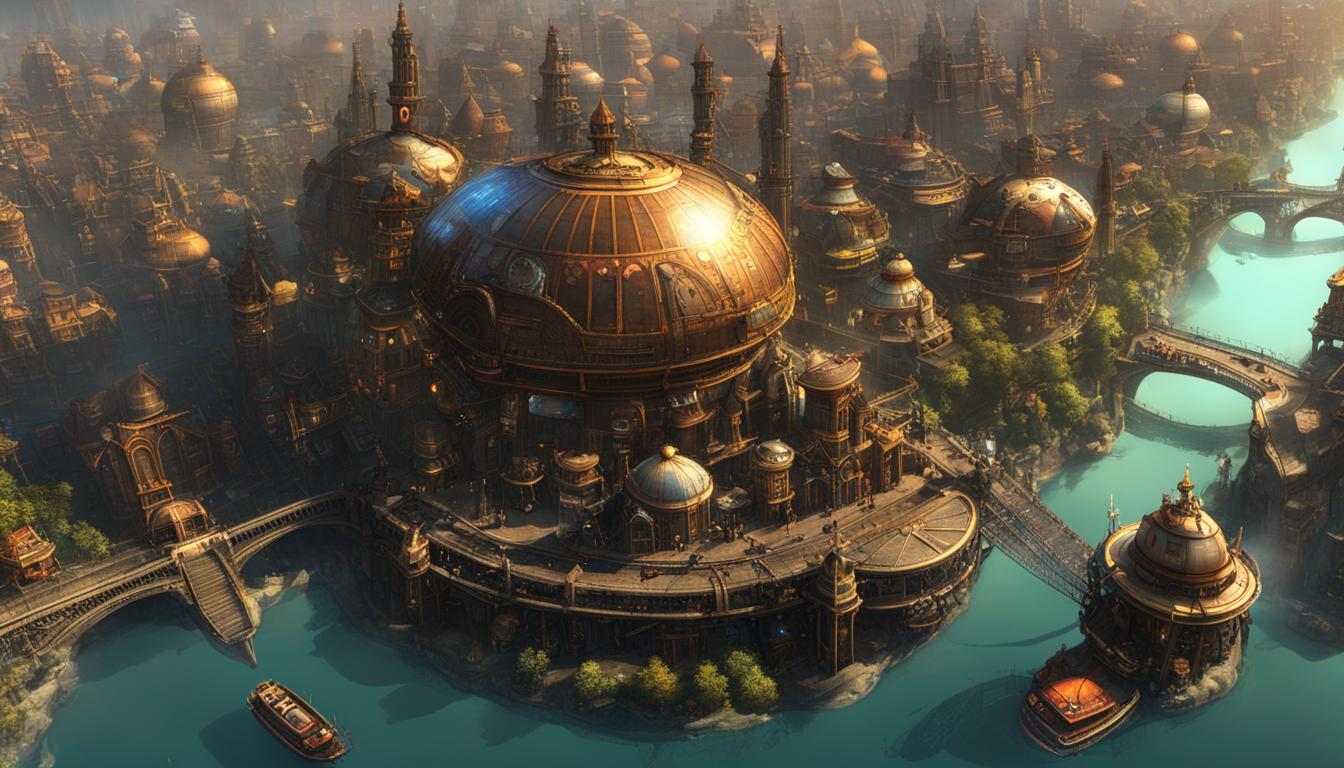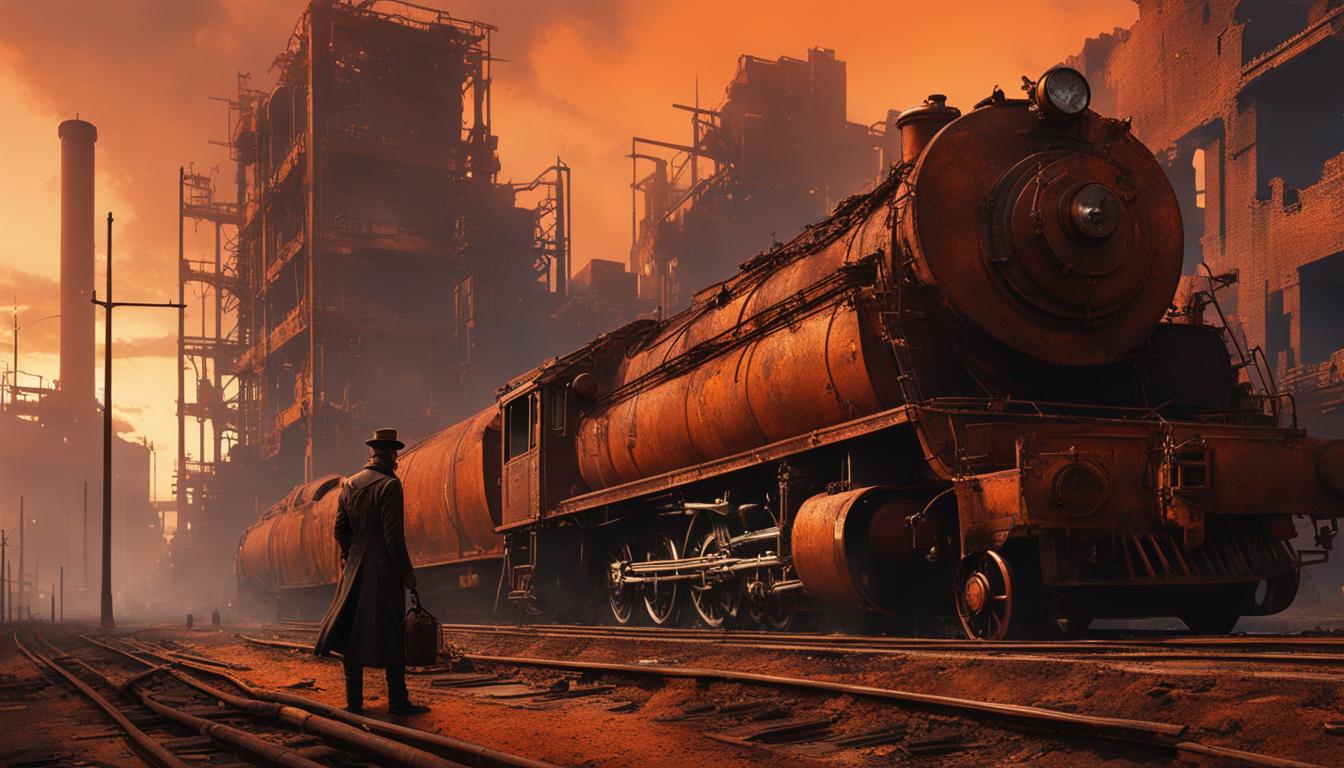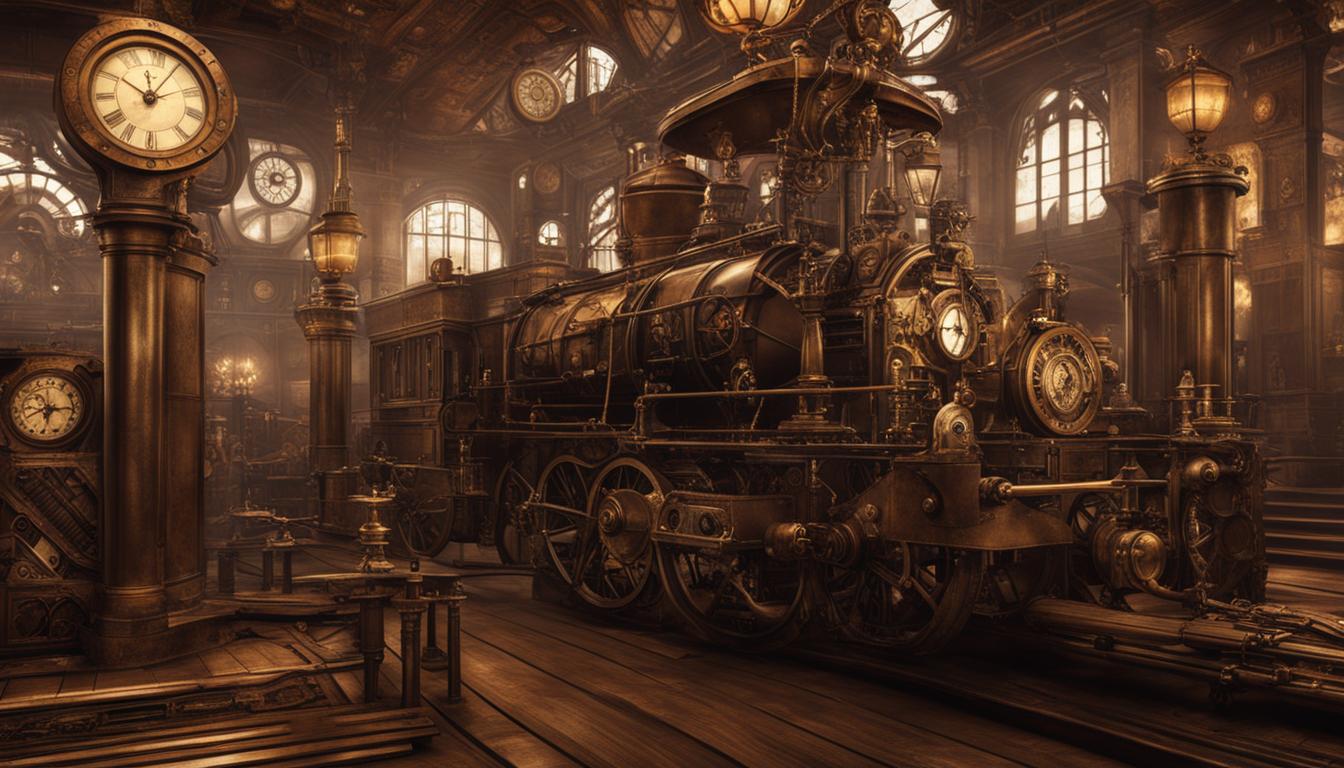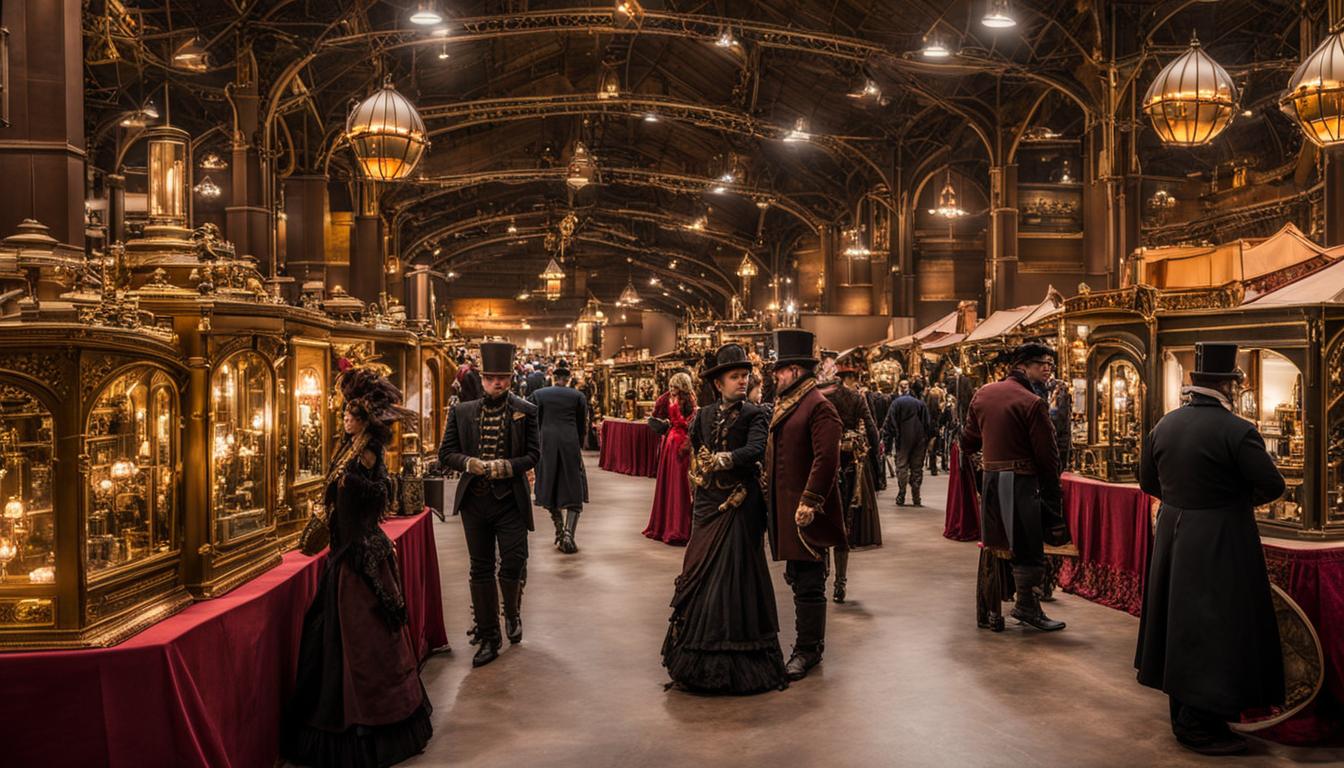Steampunk horror media is a genre that brings together the captivating worlds of steampunk and horror, resulting in a one-of-a-kind fusion of vintage aesthetics and spine-chilling narratives. This intriguing genre has been steadily gaining popularity in recent years, attracting fans who are drawn to the mesmerizing gears and cogs of this genre blend. Get ready to embark on a journey into the dark depths of steampunk horror media as we explore the captivating elements that make it truly unique.
Key Takeaways:
- Steampunk horror media combines the worlds of steampunk and horror, creating a captivating genre blend.
- The fusion of vintage aesthetics and terrifying narratives attracts fans who are intrigued by this unique genre.
- Gothic Steampunk is a subgenre within steampunk horror media that incorporates Gothic culture, Victorian architecture, and fashion.
- The historical context of the Victorian era, including the Industrial Revolution, influences Gothic Steampunk.
- Literary works by authors such as Jules Verne and Mary Shelley have had a significant impact on Gothic Steampunk.
Understanding Gothic Steampunk
Gothic Steampunk is a captivating subgenre that combines the aesthetics and themes of Gothic culture with the technology and alternate history of Steampunk. It takes inspiration from the dark and macabre elements of Gothic literature and the Victorian era, resulting in a unique blend that appeals to fans of both genres. With its haunting themes, Victorian architecture and fashion, and elements of neo-Victorianism, Gothic Steampunk has created its own subculture within the larger Steampunk community.
This subgenre draws upon the historical context of the Victorian era, which was marked by the Industrial Revolution and significant advancements in science. The rise of steam-powered machinery and technological innovations provided the foundation for the Steampunk genre, while the Gothic influence added a dark and mysterious twist. Gothic Steampunk explores the horror, supernatural, and scientific advancements of the era, allowing fans to delve into the intriguing complexities of this alternate history.
Literary influences play a crucial role in shaping Gothic Steampunk. Authors such as Jules Verne, H.G. Wells, Mary Shelley, and Bram Stoker have contributed to the genre through their exploration of science and technology in their works. Their novels, such as “20,000 Leagues Under the Sea,” “The Time Machine,” “Frankenstein,” and “Dracula,” have left lasting impressions on Gothic and Steampunk literature, influencing the themes and aesthetics of Gothic Steampunk.
Table: Influential Authors in Gothic Steampunk
| Author | Notable Works |
|---|---|
| Jules Verne | “20,000 Leagues Under the Sea,” “Journey to the Center of the Earth” |
| H.G. Wells | “The Time Machine,” “The War of the Worlds” |
| Mary Shelley | “Frankenstein” |
| Bram Stoker | “Dracula” |
Gothic Steampunk also extends to fashion, with its unique blend of Victorian, Gothic, and industrial styles. It incorporates elements such as corsets, waistcoats, top hats, and other accessories inspired by the Victorian era. The fashion style combines vintage elements with a dark and edgy aesthetic, creating a visually captivating look that reflects the themes and atmosphere of Gothic Steampunk.
In conclusion, Gothic Steampunk offers a captivating fusion of Gothic culture and Steampunk technology. Drawing upon the historical context of the Victorian era and the literary influences of renowned authors, this subgenre has created a unique subculture within the Steampunk community. With its haunting themes, distinctive fashion, and blend of dark aesthetics, Gothic Steampunk continues to captivate fans who are drawn to its mysterious and visually striking world.
Historical Influences on Gothic Steampunk
Gothic Steampunk, as a genre, is deeply rooted in the historical context of the Victorian era. This period, characterized by the Industrial Revolution and significant advancements in science and technology, played a vital role in shaping the thematic elements of Gothic Steampunk.
The Victorian era, spanning from 1837 to 1901, witnessed a major shift in societal values and the emergence of steam-powered machinery. The Industrial Revolution brought about significant changes in manufacturing processes, transportation, and communication. These advancements opened up new possibilities and fueled the imaginations of authors and artists, inspiring the incorporation of steam-powered technology in Gothic Steampunk narratives.
Gothic Steampunk drew inspiration from various literary works of the era, including science fiction novels and Gothic horror stories. Authors like Jules Verne, H.G. Wells, Mary Shelley, and Bram Stoker captivated readers with their exploration of scientific advancements, alternate histories, and supernatural elements. Their visionary storytelling and imaginative inventions provided a rich foundation for the fusion of Gothic and Steampunk elements in later works.
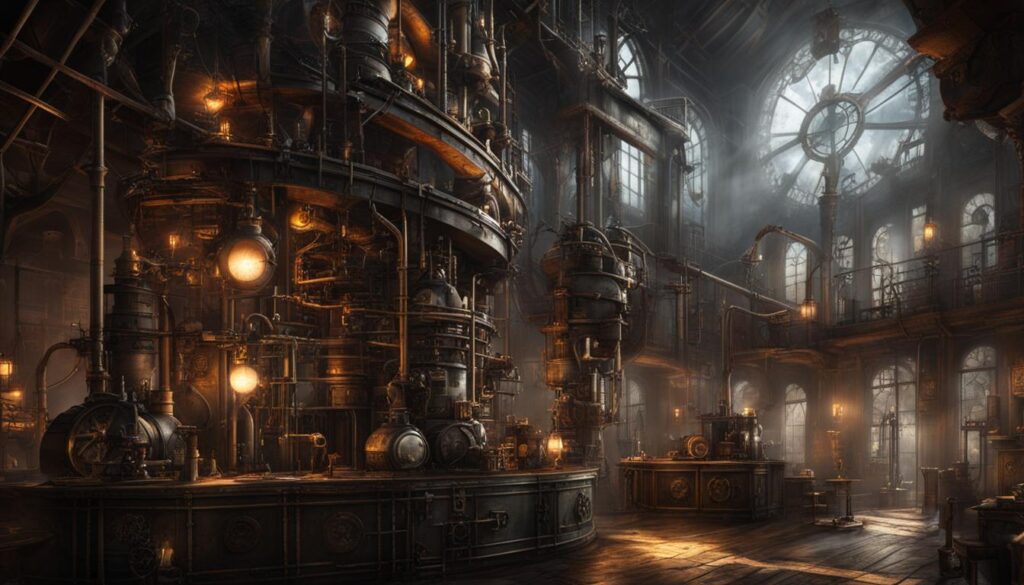
The Victorian era: Influencing Gothic Steampunk
| Victorian Era | Industrial Revolution | Science Fiction | Gothic Horror |
|---|---|---|---|
| The Victorian era, spanning from 1837 to 1901, provided the historical backdrop for Gothic Steampunk. | The Industrial Revolution brought significant advancements in machinery and technology, inspiring the integration of steam-powered elements in Gothic Steampunk. | Science fiction novels of the era, such as those written by Jules Verne and H.G. Wells, explored the possibilities of scientific advancements and alternate realities. | Gothic horror stories, like Mary Shelley’s “Frankenstein” and Bram Stoker’s “Dracula,” influenced the macabre themes and supernatural elements in Gothic Steampunk narratives. |
Incorporating elements from the Victorian era, the Industrial Revolution, science fiction, and Gothic horror, Gothic Steampunk offers a unique blend of historical context and imaginative storytelling. It allows readers and enthusiasts to delve into a world where steam-powered technology meets dark and haunting themes.
Literary Influences on Gothic Steampunk
Gothic Steampunk is a genre that draws inspiration from various literary works, shaping its themes, aesthetics, and narratives. Influential authors such as Jules Verne, H.G. Wells, Mary Shelley, and Bram Stoker have played a significant role in the development and popularity of Gothic Steampunk. Their writings have fueled the imagination of fans and artists alike, contributing to the rich tapestry of this captivating subgenre.
One of the key literary figures that have influenced Gothic Steampunk is Jules Verne. Known as the “Father of Steampunk,” Verne’s novels, such as “Twenty Thousand Leagues Under the Sea” and “Journey to the Center of the Earth,” introduced readers to the wonders of fantastical inventions and unexplored realms. His imaginative storytelling and focus on scientific advancements have become staples in the Gothic Steampunk genre.
H.G. Wells, another prominent author, further contributed to Gothic Steampunk with his iconic novels like “The Time Machine” and “The War of the Worlds.” Wells’ works explore the consequences of technological progress and often incorporate dark and otherworldly elements, perfectly aligning with the Gothic aesthetic and themes.
“There is something at work in my soul which I do not understand.” – Mary Shelley, Frankenstein
Mary Shelley’s groundbreaking novel “Frankenstein” has also left a lasting imprint on Gothic Steampunk. Shelley’s exploration of the consequences of scientific ambition and the blurred lines between life and death resonates deeply within the genre. Her work has inspired countless adaptations and interpretations, providing a foundation for the fusion of horror and Steampunk.
Last but not least, Bram Stoker’s iconic novel “Dracula” has become a cornerstone of Gothic literature and has had a profound influence on Gothic Steampunk. Stoker’s tale of the enigmatic vampire has fascinated readers for generations, and its themes of immortality, desire, and the battle of good against evil have found their place in the dark and mysterious realm of Gothic Steampunk.
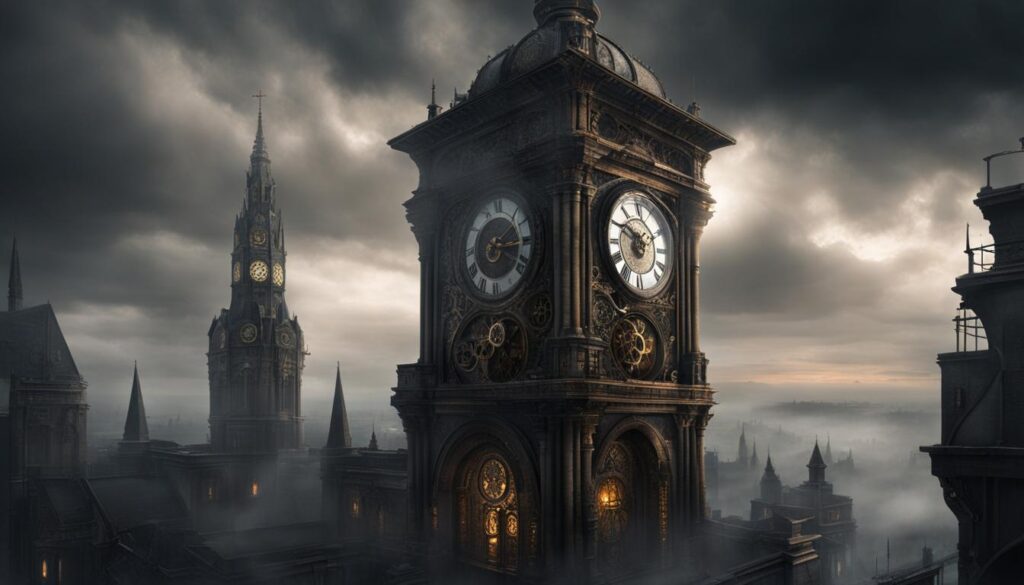
Table: Literary Influences on Gothic Steampunk
| Author | Notable Works |
|---|---|
| Jules Verne | “Twenty Thousand Leagues Under the Sea,” “Journey to the Center of the Earth” |
| H.G. Wells | “The Time Machine,” “The War of the Worlds” |
| Mary Shelley | “Frankenstein” |
| Bram Stoker | “Dracula” |
Gothic Steampunk Fashion: A Dark and Captivating Style
In the world of Gothic Steampunk, fashion is an integral part of the subculture, combining the elegance of Victorian-inspired clothing with a dark and edgy aesthetic. The fashion style draws inspiration from the Victorian era, incorporating corsets, top hats, and other accessories that evoke a sense of mystery and sophistication.
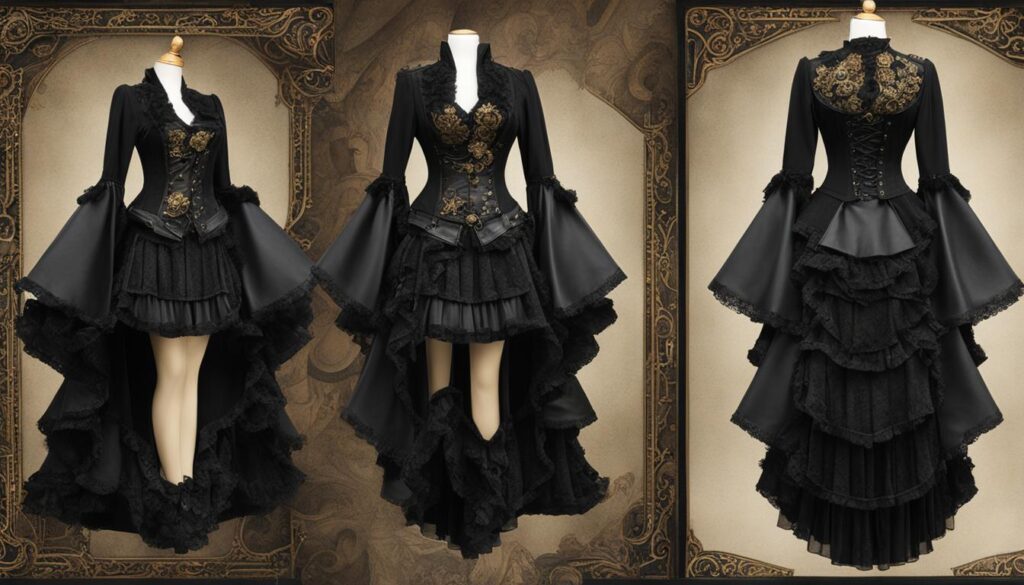
Corsets play a significant role in Gothic Steampunk fashion, providing a structured and fitted silhouette that accentuates the curves of the body. These garments, often embellished with intricate lace and metal detailing, add a touch of sensuality to the overall look. Paired with long skirts or pants, corsets create a dramatic and visually striking ensemble.
Top hats are another iconic accessory in Gothic Steampunk fashion. These tall, cylindrical hats add a sense of grandeur and authority to the attire, elevating the overall aesthetic. They are often adorned with feathers, gears, or other Steampunk-inspired embellishments, further enhancing the unique and captivating style.
| Key Elements of Gothic Steampunk Fashion | Aesthetics |
|---|---|
| Corsets | Structured and fitted silhouette |
| Top Hats | Elevated, grandiose look |
| Victorian-Inspired Clothing | Elegance and sophistication |
| Gothic and Industrial Accents | Dark, macabre elements combined with Steampunk motifs |
Victorian-inspired clothing, such as waistcoats, ruffled blouses, and high collars, are also prevalent in Gothic Steampunk fashion. These garments exude elegance and sophistication, capturing the essence of the Victorian era. Combined with the dark and macabre accents of Gothic culture, the fashion style creates a harmonious blend of the old and the new.
Gothic Steampunk fashion is a true testament to the power of style in expressing one’s individuality and embracing the allure of the past. With its corsets, top hats, and Victorian-inspired clothing, it offers a unique and captivating look that captures the imagination and transports us to a world where vintage aesthetics meet the macabre.
Gothic Steampunk: Where Macabre Themes Meet Victorian Aesthetics
If you’re a fan of the dark and mysterious, and have a penchant for all things Victorian, then Gothic Steampunk is the genre for you. This unique blend combines the macabre themes of Gothic culture with the vintage aesthetics of the Victorian era, resulting in a captivating world of horror and industrial wonder.
In Gothic Steampunk, the juxtaposition of death and decay with the polished elegance of Victorian architecture and fashion creates a visually striking atmosphere. Imagine a world where haunted mansions are illuminated by the warm glow of gas lamps, and mechanical contraptions crafted from brass and gears are infused with supernatural power. It’s a world of beauty and darkness, where the lines between science and sorcery blur.
Industrial elements play a crucial role in Gothic Steampunk, adding a sense of gritty realism to the fantastical setting. Gears, cogs, and other mechanical components are intricately woven into the design of everyday objects, showcasing the intricate craftsmanship of an era driven by progress and innovation. These elements not only enhance the visual appeal of the genre but also serve as a reminder of the Industrial Revolution’s impact on society and the price paid for progress.
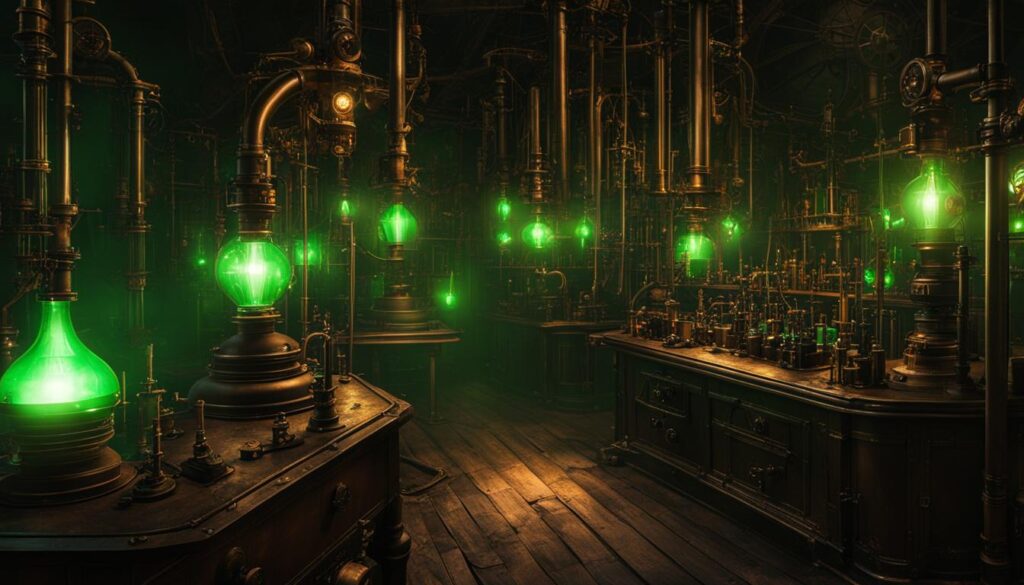
Gothic Steampunk is a genre that thrives on the tension between light and darkness, beauty and horror. It explores themes of the supernatural, the unknown, and the tumultuous relationship between humanity and technology. Whether you’re drawn to the eerie allure of Victorian Gothic literature or fascinated by the intricate world of Steampunk, Gothic Steampunk offers a unique blend that will transport you to a realm where nightmares and dreams collide.
Conclusion
The fusion of Steampunk and horror in media has birthed a mesmerizing genre that seamlessly blends the vintage aesthetics of Steampunk with the spine-chilling narratives of horror. This unique combination, known as Gothic Steampunk, has captured the hearts of fans who crave the captivating cogs of this genre blending.
Gothic Steampunk, with its awe-inspiring macabre themes, Victorian-inspired fashion, and industrial elements, has rapidly gained popularity, carving out its own distinctive subculture within the wider Steampunk community. This captivating genre allows for a deep exploration of the Victorian era, the Industrial Revolution, and the profound impact of technology on society.
By embracing the Gothic Steampunk genre, creators and enthusiasts have found a thrilling way to navigate the depths of Steampunk horror media. The confluence of vintage aesthetics, dark and edgy themes, and a hint of mystery has made Gothic Steampunk a captivating treasure trove for those with an insatiable appetite for all things unconventional and enigmatic.
With the genre blending of Steampunk and horror, Gothic Steampunk offers a rich tapestry of tales that transport readers and viewers to a world where the past and future collide in a breathtaking symphony of fear and fascination. It is a testament to the limitless possibilities of imagination and the power of blending genres to create something truly extraordinary.
FAQ
What is Steampunk horror media?
Steampunk horror media is a genre that combines the elements of steampunk and horror, creating a unique blend of vintage aesthetics and terrifying narratives.
What is Gothic Steampunk?
Gothic Steampunk is a subgenre that combines the aesthetics and themes of Gothic culture with the technology and alternate history of Steampunk.
What are the influences on Gothic Steampunk?
Gothic Steampunk is heavily influenced by the Victorian era, the Industrial Revolution, science fiction works, and Gothic horror novels.
Which authors have had a significant impact on Gothic Steampunk?
Authors such as Jules Verne, H.G. Wells, Mary Shelley, and Bram Stoker have influenced the themes and aesthetics of Gothic Steampunk literature.
What is Gothic Steampunk fashion?
Gothic Steampunk fashion is a unique blend of Victorian, Gothic, and industrial styles, incorporating corsets, top hats, and other accessories inspired by the Victorian era.
How would you describe the themes and aesthetics of Gothic Steampunk?
Gothic Steampunk is characterized by dark and haunting themes, Victorian aesthetics, and industrial elements such as gears, cogs, and mechanical components.
Why has Gothic Steampunk gained popularity?
The fusion of Steampunk and horror in media has created a captivating genre that appeals to fans drawn to its unique blend of vintage aesthetics and terrifying narratives.

